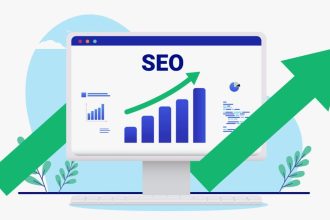In an era defined by unprecedented agility and a dynamic global economy, the traditional boundaries of employment are rapidly dissolving. Businesses worldwide are increasingly embracing the contingent workforce—a vast, flexible ecosystem of contractors, freelancers, and service providers—to drive innovation, scale operations, and access specialized skills without the overheads of permanent hires. This paradigm shift, however, presents a complex challenge: how do organizations effectively manage this burgeoning external talent pool, ensuring compliance, optimizing spend, and maximizing productivity? The answer, incredibly, lies in sophisticated technological solutions, and one platform stands out as a true game-changer, fundamentally reshaping how companies engage with their extended workforce.
Enter SAP Fieldglass, a remarkably powerful vendor management system (VMS) that has ascended to become the industry’s undisputed leader in managing external talent and services procurement. Far more than a mere tracking tool, Fieldglass offers an integrated, end-to-end solution, providing unparalleled visibility and control over the entire lifecycle of non-permanent workers and statement-of-work (SOW) engagements. From initial requisitioning and talent sourcing to onboarding, time and expense tracking, invoicing, and comprehensive analytics, it orchestrates the complex symphony of contingent labor with precision and strategic foresight, transforming what was once a chaotic, fragmented process into a streamlined, highly efficient operation. By integrating insights from AI and machine learning, it offers predictive capabilities, anticipating workforce needs and optimizing resource allocation, thereby empowering enterprises to adapt swiftly to market demands.
Key Insights: Understanding SAP Fieldglass
| Category | Description/Information |
|---|---|
| Product Type | Vendor Management System (VMS) |
| Core Functionality | Manages the entire lifecycle of external workforce (contractors, freelancers, temporary staff) and services procurement (Statement of Work — SOW engagements). |
| Key Modules/Capabilities |
|
| Primary Benefits |
|
| Target Users | Large enterprises, Procurement departments, HR teams, Project Managers, Hiring Managers. |
| Official Website Reference |
The Transformative Advantages: Why Businesses Are Leaning In
The advantages offered by SAP Fieldglass are multifaceted, extending far beyond simple operational efficiency to touch upon strategic business growth and risk management. Firstly, it delivers unparalleled visibility and control. Imagine a sophisticated air traffic control system, meticulously tracking every aircraft in the sky; Fieldglass offers a similar panoramic view of your entire external workforce, regardless of geography or engagement type. This holistic perspective enables companies to understand precisely where their contingent labor spend is going, identify bottlenecks, and make data-driven decisions that were previously impossible, leading to optimized resource allocation and reduced overspending.
Secondly, the platform is a powerful engine for cost savings and efficiency gains. By standardizing processes, automating tasks such as requisition creation and invoice processing, and facilitating competitive bidding among suppliers, organizations can significantly reduce administrative burdens and negotiate better rates. “We’ve seen clients achieve upwards of 10-15% cost reductions in their contingent labor spend within the first year of implementing Fieldglass,” observes Sarah Chen, a Senior Analyst at Workforce Solutions Group, highlighting its remarkably effective financial impact. This efficiency extends to faster talent acquisition, reducing the time-to-fill for critical roles and ensuring projects stay on schedule, contributing directly to project success and organizational agility.
Perhaps most critically, SAP Fieldglass acts as a robust shield against compliance risks. The regulatory landscape surrounding contingent labor is a minefield of complexities, encompassing co-employment risks, worker misclassification, and varying labor laws across different jurisdictions. Fieldglass embeds compliance directly into its workflows, providing audit trails, enforcing pre-defined policies, and integrating with background check services, thereby dramatically mitigating potential legal and financial liabilities. This proactive approach ensures that companies can confidently expand their reliance on external talent without inadvertently exposing themselves to unforeseen risks, fostering a secure and legally sound operational environment.
Pioneering the Future of Work
Looking ahead, SAP Fieldglass is not merely resting on its laurels but is actively shaping the future of work. With continuous advancements in artificial intelligence and machine learning, the platform is evolving to offer even more sophisticated capabilities. Imagine a system that not only manages but also predicts talent needs based on project pipelines and market trends, or one that intelligently matches contingent workers to roles by analyzing skills, experience, and even cultural fit. These future enhancements promise to further empower businesses, transforming talent acquisition from a reactive necessity into a proactive, strategic advantage, enabling them to build highly specialized, agile teams with unprecedented speed and precision.
The platform is a testament to SAP’s unwavering commitment to innovation, providing a crucial bridge between an organization’s strategic objectives and the flexible workforce required to achieve them. As the global economy continues its rapid evolution, businesses that master the art of contingent workforce management will undoubtedly emerge as leaders, capitalizing on newfound efficiencies and a vast, untapped pool of global talent. Embracing SAP Fieldglass isn’t just an operational upgrade; it’s a strategic imperative, a bold step towards a more flexible, efficient, and prosperous future for enterprises navigating the complexities of the modern talent landscape. Its pervasive influence is undeniable, charting a course for businesses to thrive in the contingent economy.






